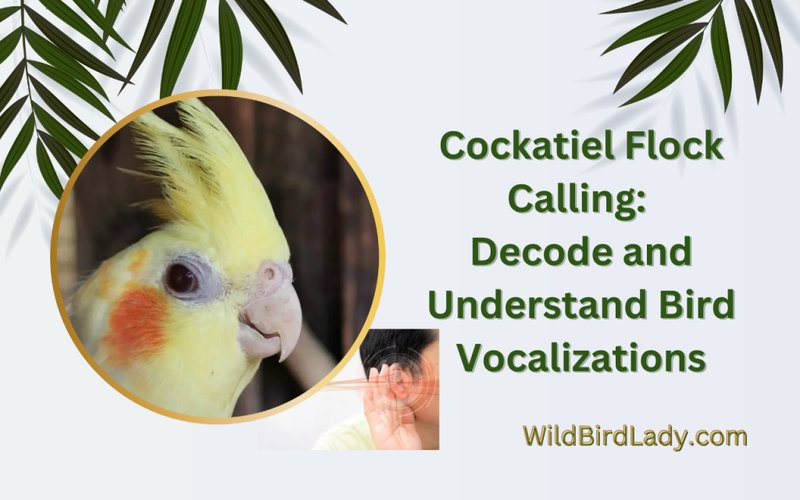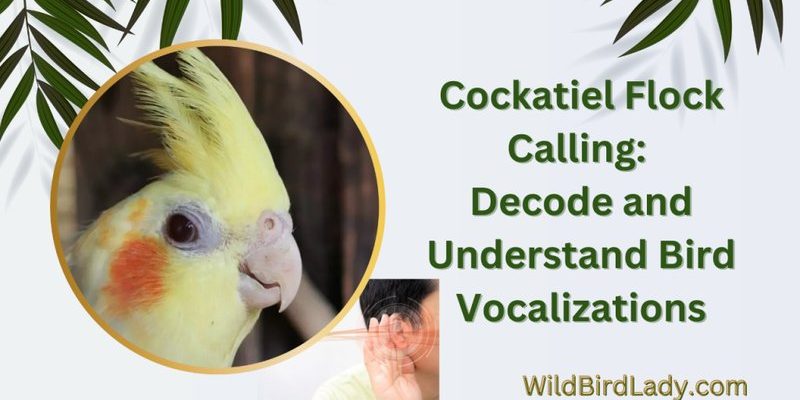
Understanding these vocalizations isn’t just about knowing what they sound like; it’s about connecting with your feathered friend on a deeper level. Cockatiels can be very expressive, so it’s worth paying attention to their sounds. Whether it’s a cheerful whistle or a loud squawk, each sound has a purpose. Let’s explore the different types of vocalizations they make and what they might be trying to say.
Common Cockatiel Vocalizations
When it comes to cockatiels, the first sound that often comes to mind is the whistle. Cockatiels are known for their whistling ability, and they often mimic tunes they’ve heard. Sometimes, they even create their own melodies! This is their way of showing happiness and playfulness. Think of it like a kid humming a favorite song while they play.
Whistling serves multiple purposes. It can be a way for cockatiels to attract attention or communicate with their owners. If you’ve ever caught your cockatiel whistling a tune, consider yourself lucky—they might be trying to show off or share a good vibe.
Another common vocalization is the chirp, which can vary in pitch and intensity. Smaller chirps often indicate contentment. You might hear these sounds when your cockatiel is just hanging out, enjoying their environment. On the flip side, louder or more frantic chirps could mean they’re feeling stressed or threatened.
Understanding Cockatiel Calls
So, now that we’ve touched on the basics, let’s dig deeper into specific calls. Cockatiels have a variety of calls that can signal different things. For instance, a soft, low call often means they’re relaxed and comfortable. You might hear this sound when they’re perched peacefully on your shoulder.
In contrast, an alarm call is usually much sharper and louder. If your cockatiel spots something unusual, like a new object or a potential danger, you’ll definitely know. This call is designed to alert their flock—whether it’s their human family or other cockatiels—of something unexpected.
You might also notice that cockatiels sometimes engage in “talking.” Some cockatiels can learn to mimic human speech, repeating words or phrases they hear regularly. This isn’t just a party trick; it’s their way of connecting with you. If they pick up on certain words or phrases that elicit strong reactions from you, they might keep saying them just for fun!
What Does a Squawk Mean?
Ah, the infamous squawk. This loud, sharp sound can be a bit jarring, especially if you’re not used to it. But fear not! A squawk doesn’t always mean something bad. Sometimes, cockatiels use squawking to express excitement or frustration, particularly during playtime. For instance, if your bird is flying around or playing with a toy and suddenly squawks, they’re probably just enjoying themselves.
However, if the squawking happens more frequently or sounds distressed, it could point to an issue. Maybe your bird is bored or needs more interaction. A lack of stimulation can lead to a stressed bird, so if you hear a lot of squawking, it might be time to up your playtime game!
How to Respond to Vocalizations
Here’s the thing: responding to your cockatiel’s vocalizations can strengthen your bond. When they whistle or chirp at you, try whistling back or talking to them. They’ll appreciate your attention and may even respond with a few more chirps. You can think of it as a friendly back-and-forth conversation.
If you notice a change in their usual sounds, pay attention. Changes can indicate stress or health issues. For example, if your typically chatty cockatiel becomes quiet or stops vocalizing, it could be a sign they’re not feeling well. Always check in with your vet if you notice sudden vocal changes.
The Importance of Social Interaction
Cockatiels are social creatures that thrive on interaction. A significant part of their vocalization behavior is linked to how much social interaction they receive. If they feel isolated, they might vocalize more to get your attention. Think of them like little social butterflies—without enough connection, they can become anxious.
To keep your cockatiel happy and vocal, spend time talking, playing, and engaging with them. You could try setting aside time each day for some dedicated playtime. This not only helps them feel loved but also encourages them to express themselves through their delightful sounds.
In a nutshell, understanding cockatiel vocalizations opens a window into their world. Each sound tells a story—whether it’s a cheerful whistle, a curious chirp, or an alert squawk. By paying attention to these sounds, you’ll get to know your cockatiel on a deeper level.
Creating a comfortable, interactive environment is key. And don’t forget, every cockatiel has its own personality. Some may be more vocal than others, and that’s perfectly okay! So next time you hear a sound from your feathered friend, take a moment to listen. You might just discover a whole new way to connect with your adorable cockatiel.

